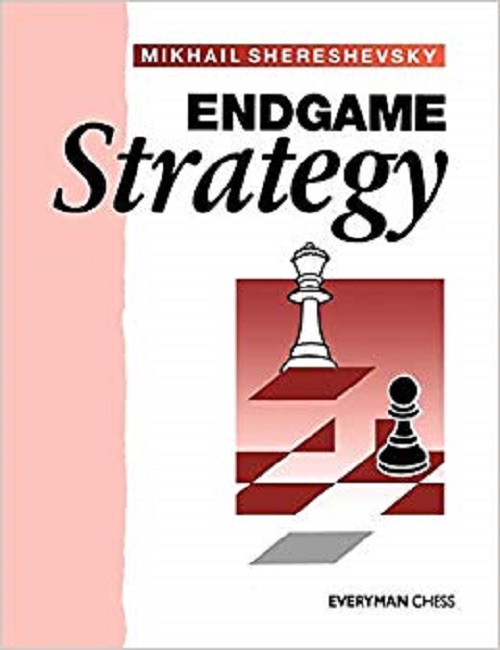INTRODUCTION
Many great trainers say you should start learning chess from endgames. There are many reasons why that is correct, most important being endgames are the perfect setup for learning and improving deep and accurate calculating.
A large majority of chess beginners who are not guided by an experienced trainer will overlook endgames because:
- Endgames can be boring.
- Many games don’t reach endgames.
- Most endgame books focus on specific endgames rather than endgame principles.
To an inexperienced eye, it can seem that studying an opening will improve your game more than studying endgames. However that does not stand true. As Mihail Shereshevsky said himself the importance of openings starts to increase on an FM level and becomes most important part of the game in GM games.
BASIC AUTHOR INFORMATION
Mihail Shereshevsky was born on April 21, 1950, in Minsk, Belarus. He is an international master, chess trainer and a prominent author. His two books “Endgame strategy” and “Mastering the Endgame” are both considered as classics of the chess literature.
It is worth mentioning he has collaborated with the world’s most famous coach. IM Mark Dvoretsky, who helped him to complete this volume. Shereshevsky himself admitted the books wouldn’t be the same without Dvoretsky’s contribution.

CONTENT
The first thing it is important to emphasize is: “This is not an endgame theory book.” Although the book contains the word “endgame” in the title, the book differs greatly from other endgame manuals. The reader might find himself confused with the terminology – a number of studied positions will be more resembling of a late middle game rather than an endgame.
Where is an exact line between the middle game and endgame? There is no clear-cut answer, but here are guidelines that help distinguish these two phases of the game. An endgame arises when:
- The main objective becomes “queen a pawn “(rather than trying to attack and checkmate an opponent).
- The king becomes an active fighting piece.
- Both sides have limited material
In the end, it doesn’t matter whether you call a position an endgame or a queen-less middle game – the only thing that matters is the quality of your play. And improving the quality is the main goal of this book.
The content of the book is divided into 13 chapters:
- Basic principles of endgame play
- Centralization of the king
- The role of pawns in the endgame
- The problem of exchanging
- “Do not hurry”
- Schematic thinking
- The principle of two weaknesses
- The struggle for the initiative
- Suppressing the opponent’s counter-play
- Positions with an isolated d-pawn
- The two bishops
- The 3-2 Queen-side pawn majority
- Complex endings
As plain from the titles, every chapter covers a specific endgame technique. The focus of the book is not on specific endgame positions, like Vancura’s position or Philidor’s position. On several sample games, the author focuses on UNDERSTANDING. All examples are taken from a real game, usually from the legends of chess such as Capablanca, Lasker, Fischer, Tal, Botvinnik, Smyslov, Karpov, Kasparov and many others.
Author’s main idea is to explain the PRINCIPLES and IDEAS of endgame play. His goal is not to teach you how to win a typical position.
Shereshevsky’s comments are superb. The analysis in the book is straightforward and simple. The author follows the mainline, without dwelling too deeply in the forest of the possible lines. Apart from his own thoughts and evaluations, the reader is often challenged with questions or positions to solve, which ensures his active participation.
The material is very coherent and readable. What I particularly like is that every chapter is independent of the others. It is possible to skip back and forth throughout the book. The reader can choose whether he will study it from cover to cover, or simply focus on a certain subject. This increases its value – it is possible to return to certain chapters every now and then without the need to go through 500 pages to get to the part that interests you.
Another positive side of the book is the number of diagrams – not too few, not too many. Diagrams are usually given for key positions and they make the book easy to read even without the board.
To conclude this section I’d mention that it’s still necessary to learn some specific, basic endgames such as Philidor or Lucena which happen quite often and are not covered in this book.
CONCLUSION
All in all, Endgame Strategy is one great book. The writing is superb, the material is fantastic and the role of teaching us all endgame is fulfilled. There is a good reason why this book is highly valued by many IM’s and GM’s. It is no wonder that the first edition of the book, first published in 1981, was instantly sold in 50 000 copies!
I’d recommend this book to everyone between 1300 and 2200 FIDE elo. If you are looking on taking a book to improve your game, this is the one you should definitely take into consideration.
BOOK MARK ★★★★★

